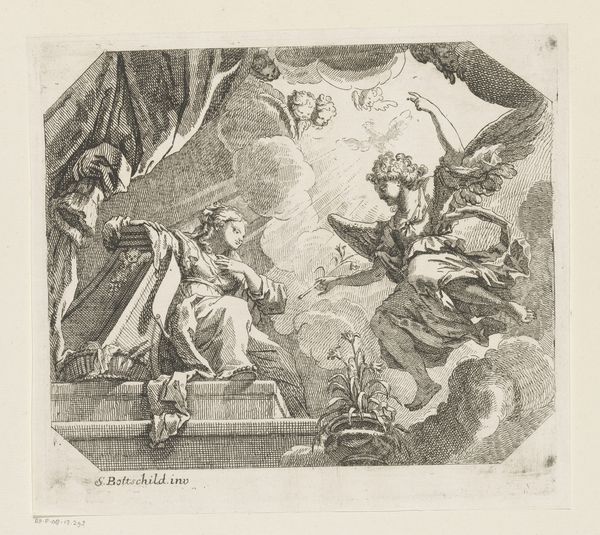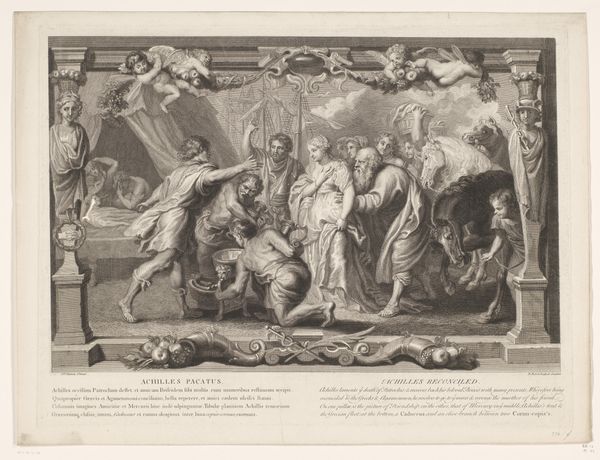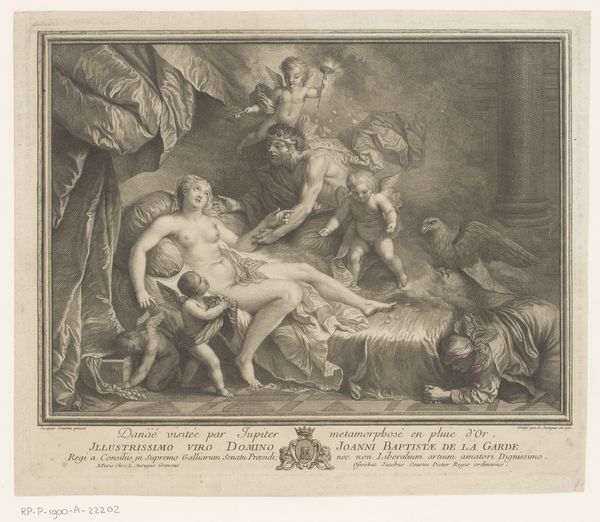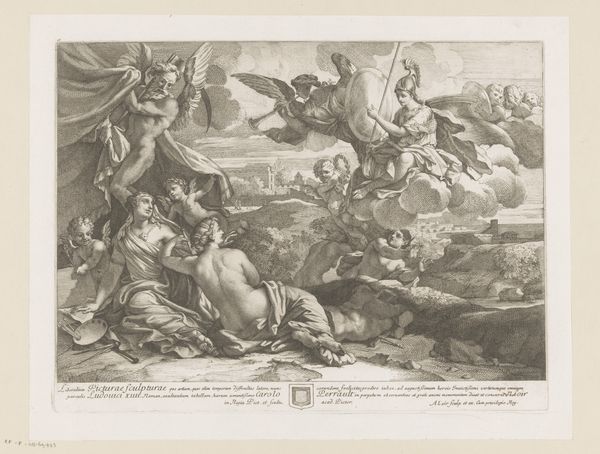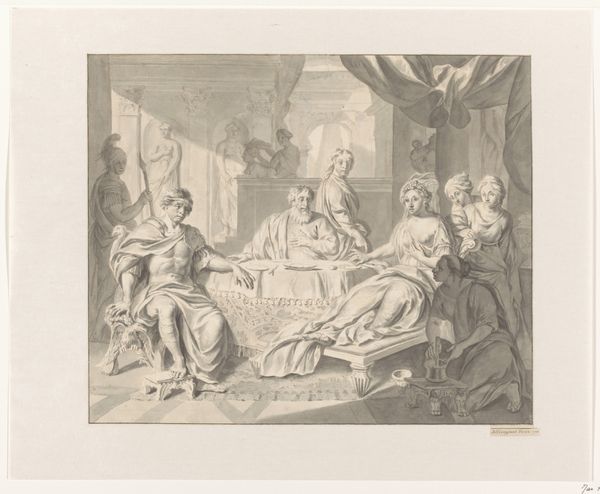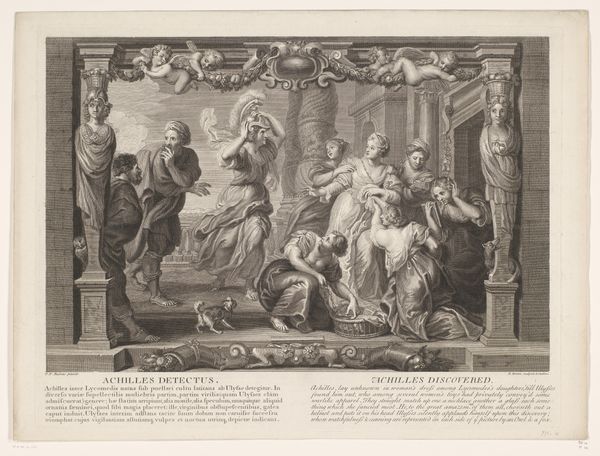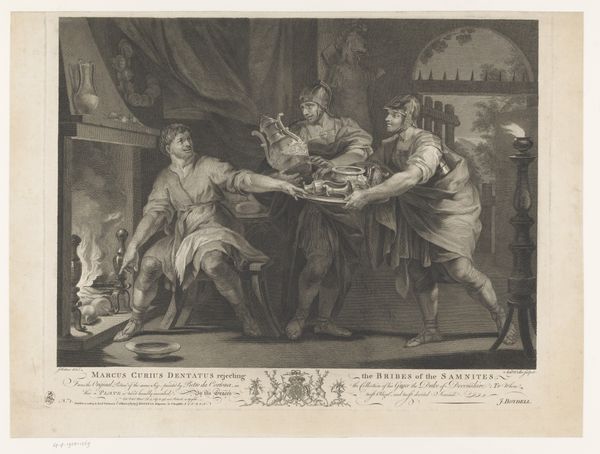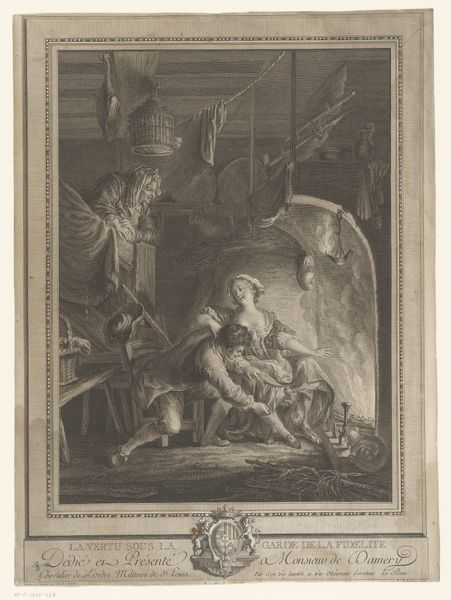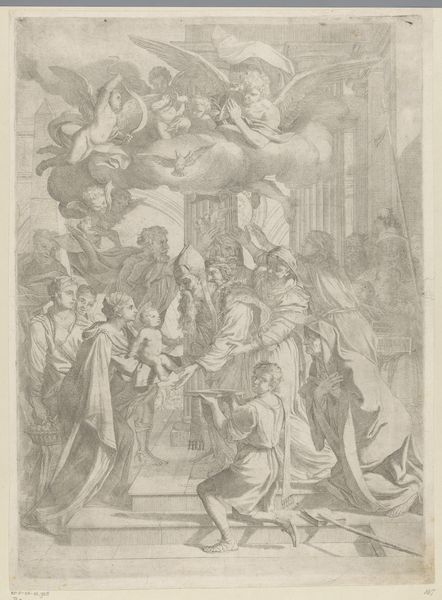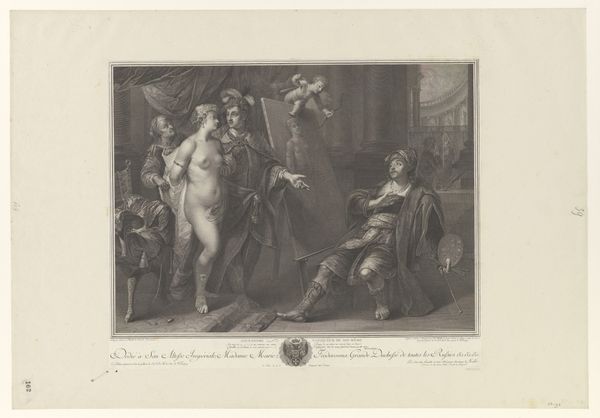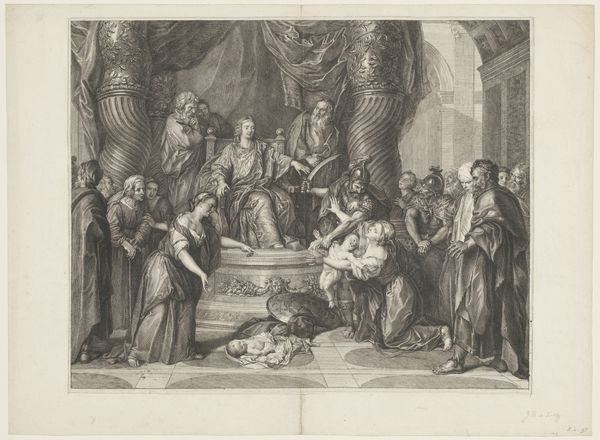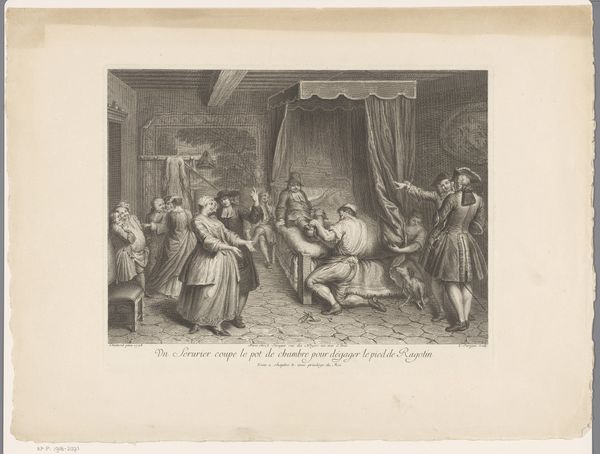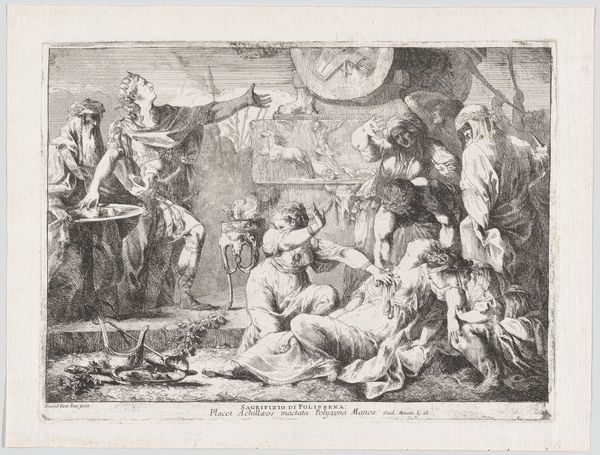
print, engraving
#
neoclacissism
#
allegory
#
narrative-art
# print
#
classical-realism
#
charcoal drawing
#
figuration
#
form
#
classicism
#
line
#
history-painting
#
academic-art
#
engraving
Dimensions: height 554 mm, width 667 mm
Copyright: Rijks Museum: Open Domain
Curator: This print, entitled "Corésus offert soi-même pour Callirhoé," dates to 1773 and is the work of Jérôme Danzel. Editor: A striking image! The figures are so dramatically rendered, almost theatrical. The clear lines and composition immediately evoke the aesthetics of neoclassicism. The emotion is so high! Curator: Precisely! As a print it circulated widely and speaks to the prevailing artistic taste and intellectual currents of the era. Let's consider its subject in relation to its reception in late 18th-century France, particularly the public’s embrace of virtue and heroism. This scene from ancient history embodies just that – Corésus sacrifices himself for the sake of Callirhoé and to end a plague. How do you interpret that within this period? Editor: The scene carries a strong narrative about sacrifice, and highlights questions about gendered virtue, the expectations placed upon women, and the societal repercussions when those expectations are violated, which are incredibly important themes. There's also the obvious question: Whose story are we *really* telling here? The passive, victimized Callirhoé, or the active, self-sacrificing Corésus? This choice seems far from innocent in the patriarchal context of the time. Curator: An incisive reading. Think also of the societal role that art like this played! Danzel’s print isn't merely an aesthetic object. It’s participating in a larger visual culture, disseminating ideas about civic responsibility and personal conduct sanctioned by political and cultural elites. The architecture reminds me of a stage. Do you see the link there to what a printmaker during the era hoped to do, particularly using older Greco-Roman stories? Editor: Absolutely. The print transforms private virtue into a public spectacle. That's fascinating when considering art’s ability to not only shape but to be shaped *by* such intense political and philosophical debates. To ask: What made this an acceptable visual and not others, and to further investigate that within questions of gender, status and ability can bring the scene into modern focus. Curator: Considering how Danzel used line and form, what's communicated—do you believe there is an intentional message being projected? Editor: After this discussion, I now feel there's much more depth here. Looking more deeply, it certainly asks pertinent questions around whose sacrifice we prioritize and ultimately immortalize.
Comments
No comments
Be the first to comment and join the conversation on the ultimate creative platform.
